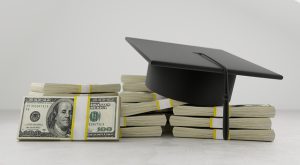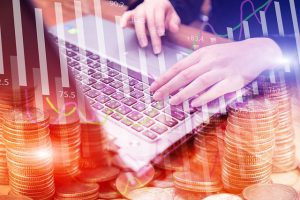China Economy News: Unveiling Growth Prospects
Updated Sept 22, 2023
China’s Economy Faces Headwinds Amid Property Woes and COVID Outbreaks
China’s economy grew just 0.4% in the second quarter from a year earlier, missing expectations in a Reuters poll, as widespread COVID-19 lockdowns and a deepening downturn in the property market took a heavy toll on activity.
The tepid growth was the slowest since the first quarter of 2020, when the economy contracted 6.9% as an early outbreak of COVID-19 paralyzed the country.
“Economic performance was significantly worse than expected,” said Zhiwei Zhang, chief economist at Pinpoint Asset Management.
“The COVID outbreak in March and April greatly impacted all aspects of the economy. The lockdown in Shanghai and many other major cities in China disrupted supply chains, production and consumption.”
Feeble retail sales showed the impact of lockdowns on consumption, he said.
The world’s second-biggest economy almost stopped in April as extensive lockdowns were imposed across the country to contain the spread of the highly contagious Omicron variant.
While many restrictions have since been lifted, and June data showed improvement, analysts do not expect a rapid economic recovery. China is sticking to its strict zero-COVID policy amid fresh flare-ups, the country’s property market is in a deep slump, and the global outlook is darkening.
The imposition of new lockdowns in some cities and the arrival of the highly contagious BA.5 variant have heightened concerns among businesses and consumers about prolonged uncertainty.
Analysts say that China’s economy could slow further in the third quarter, raising the possibility that the full-year growth target of around 5.5% may not be met.
Many believe Chinese policymakers will step up support for the economy, but analysts say physical stimulus will be limited by fears of adding to high debt levels, while the zero-COVID strategy remains a drag.
“The disappointing economic data in the first half of the year increases the likelihood that the Chinese government will introduce more policies to stabilize growth, but the space is limited,” said Louis Kuijs, head Of Asia economics at Oxford Economics.
Sources of instability in the economy are manifold:
– The property sector has fallen into a deep malaise as developers struggle to manage mountains of debt. Property investment and home sales are falling.
– Frequent COVID outbreaks and lockdowns have devastated consumer confidence and disrupted manufacturing.
– Export growth has slowed, and imports remain soft as external demand wanes.
– The job market is under pressure, with the nationwide survey-based jobless rate rising to 6.1% in June, the highest since February 2020.
– While inflation has been relatively subdued, this could change. Wholesale inflation hit a 13-year high in June on surging commodity prices.
China’s Premier Li Keqiang recently said economic difficulties in some aspects were even more remarkable than in 2020 when the COVID-19 outbreak first hit the economy.
Many private-sector economists expect the economy to shrink in the current quarter from the previous three months, compared with the first quarter’s 1.3% quarter-on-quarter growth.
They also expect the economy to miss the government’s full-year growth target of around 5.5%, which would be the first time that has happened since 2015.
China Economic News: Investment Steady, Retail Sales Slowing Down
Fixed asset investment, a key indicator tracked policymakers looking to prop up growth, rose 6.1% in the first six months of the year from the same period a year earlier, versus a forecast 6.0% rise and down from a 6.2% jump in January-May.
The government has been accelerating infrastructure spending to boost investment.
China’s cabinet has also announced a package of policy steps, including broader tax credit rebates, deferred social security payments and loan extensions to sectors struck by COVID outbreaks.
On the other hand, retail sales contracted 2.8% in June from a year earlier, affected by lockdown measures in April and early May. This compared with a forecast 0.5% decline and a 0.7% drop in May.
The jobless rate fell to 5.5% in June from 5.9% in May, although analysts believe the actual jobless rate is higher than the official numbers suggest.
“The official Chinese unemployment rate is distorted by the large number of migrant workers that have left the cities and are not counted in the official statistics,” said Iris Pang, chief economist for Greater China at ING.
Official data showed on Friday that China’s economy narrowly escaped a contraction in the second quarter, growing just 0.4% from a year ago. That was slightly better than expected, helped by a rebound in June.
But momentum still appears to be weakening amid fresh virus flare-ups and a property market downturn, prompting some analysts to downgrade their China growth forecasts for this year and next.
Quarterly, GDP fell 2.6% in April-June, compared with the previous quarter’s 1.4% growth.
The government is due to release second-quarter GDP data on July 15 and June activity data for industrial output, retail sales and fixed-asset investment.
Full-year growth of just over 4% is widely expected, according to a Reuters poll – far below the official target of around 5.5%.
“The disappointing economic data in the first half of the year increases the likelihood that the Chinese government will introduce more policies to stabilize growth, but the space is limited,” said Louis Kuijs, head of Asia economics at Oxford Economics.
“We expect a ‘policy package’ including more infrastructure spending, postponement of some climate-change related targets, policies to support the property sector and additional monetary policy easing.”
But these measures were unlikely to prevent growth from slowing further in the third quarter from the low levels of the previous quarter, he said.
Second-quarter GDP was helped by a jump in industrial output and a recovery in consumption over June.
Industrial output grew 3.9% in June from a year earlier, up from 0.7% in May, while retail sales shrank 3.1% year-on-year – much narrower than the 11.1% slump in May.
Fixed asset investment rose 6.1% in the first six months of the year from the same period a year earlier, versus a forecast 6.0% rise and a 6.2% jump in January-May.
The government has been accelerating infrastructure spending to boost investment. China’s cabinet has also announced a package of policy steps, including broader tax credit rebates, deferred social security payments and loan extensions to sectors hit hard by COVID outbreaks.
In addition, the central bank has cut its benchmark lending rate and banks’ reserve requirement ratio to support growth.
But analysts say worries over debt and housing risks limit Beijing’s room to stimulate its economy. A sharp jump in unemployment is also a concern.
The nationwide survey-based jobless rate eased slightly to 5.5% in June from 5.9% in May, although analysts believe the actual jobless rate is higher than the official numbers suggest.
“Despite some recovery recently, the economy still faces huge downward pressure,” said Nie Wen, chief economist at Hwabao Trust in Shanghai, who expects third-quarter GDP to rise just 2.2% from a year earlier.
“Going forward, economic stimulus policies may continue but will be more restrained, as the focus will be on ensuring employment and people’s livelihood.”
China’s Premier Li Keqiang recently said economic difficulties in some aspects were even greater than in 2020 when the COVID-19 outbreak first hit the economy.
Many private-sector economists expect the economy to shrink in the current quarter from the previous three months, compared with the first quarter’s 1.3% quarter-on-quarter growth.
China’s exports likely lost momentum in June as COVID-19 outbreaks and lockdowns hit shipments, while imports also slowed, a Reuters poll showed, pointing to further weakness in its stuttering economy.
Exports are expected to have risen 13.0% in June from a year earlier, according to a median forecast in a Reuters poll of 21 economists, slowing from a 16.9% gain in May.
The poll showed that imports likely rose 4.0% from a year earlier versus zero growth in May.
China posted a record trade surplus of $78.76 billion in May as solid demand for Chinese goods amid easing lockdowns overseas offset the impact of rigid COVID-19 restrictions at home.
However the strict implementation of China’s zero-COVID policy to contain sporadic outbreaks weighed on domestic demand and output while putting immense strains on supply chains.
Many analysts expect the economy to shrink in the April-June quarter from the previous quarter, compared with the first quarter’s 1.3% growth.
For January-June, China’s exports likely rose 10% from a year earlier, while imports gained 1.0%, according to median forecasts in the poll. The country reported a double-digit export growth in the year’s first five months.
Recent Data Shows Signs of Improvement, But Risks Remain
According to official data, China’s factory activity edged up in August, expanding for the first time in three months as COVID curbs eased and demand recovered.
The official manufacturing purchasing managers’ index (PMI) registered 49.4 in August, up from 49.0 in July, the National Bureau of Statistics (NBS) said on Wednesday.
The non-manufacturing PMI came in at 52.6 in August, up from 53.8 in July, as the construction sector was still contracting.
The 50-point mark separates contraction from growth on a monthly basis.
After widespread COVID lockdowns in April and early May, top leaders have pledged to stabilize the economy and get life back to normal, doubling down on an infrastructure push and loosening financing curbs on property developers.
However, China’s economy is still facing multiple headwinds. Youth unemployment hit a record high of 20% in July, and the property market is in a deep slump.
“The PMI data aligns with our view that the economy’s recovery remains slow and bumpy,” said Zhiwei Zhang, chief economist at Pinpoint Asset Management.
China Economy News: Challenges Persist Amidst Recovery Efforts
The apprehension of potential future lockdowns will likely impede a complete economic rebound. This hesitancy in recovery is exacerbated by depressed consumption due to job losses and declining household wealth.
A recent Reuters poll has forecasted a significant slowdown in China’s growth for 2022, estimating it to be at 3.5%. This figure falls far below the official target of approximately 5.5%.
Nevertheless, there is a glimmer of hope as the Purchasing Managers’ Index (PMI) readings surpassed expectations, leading to positive shifts in Asian share markets. China’s yuan rebounded from its near two-year lows, and its stock markets experienced a notable increase of over 1%, bucking the trend of a global equities selloff.
The official composite PMI, which comprises both manufacturing and services activities, climbed to 52.2 in August, up from July’s 50.8. However, despite these positive indicators, data from August suggested that the world’s second-largest economy was grappling with challenges in sustaining momentum.
Industrial output only grew by 3.8% in August compared to the previous year, falling short of July’s 4.2% increase. Retail sales did improve, rising by 5.4% year-on-year, surpassing July’s 2.7% growth, yet remaining below June’s 6.7% increase.
Fixed asset investment, while showing growth of 5.8% in the first eight months of the year compared to the same period in the previous year, still fell short of expectations for a 5.5% rise, despite a growth rate of 5.7% from January to July.
In response to these economic challenges, the government has introduced over 50 financial support measures since late May, redirecting funds towards infrastructure projects and reducing business taxes. The central bank made key interest rate cuts in August for the second time this year.
Despite these efforts, analysts maintain a cautious outlook. August data signals that the economy is still grappling with regaining momentum, mainly due to persistent weaknesses in the property market, which continue to affect industrial metals demand and construction, according to Sheana Yue, China economist at Capital Economics.
Many experts believe that additional policy stimulus is required, especially measures to support household incomes and boost consumer spending. However, some analysts point out that COVID-19 outbreaks and associated lockdowns remain the primary challenges hindering economic progress. As of August 24, approximately 65 million Chinese residents were under lockdown in various cities, including Chengdu, the capital of Sichuan province, as reported by Nomura.
“As long as the zero-COVID policy remains in place, any rebound will be limited,” said Zhiwei Zhang.
China Economic News: Navigating Economic Challenges and Calls for Reform
China’s mounting economic challenges have fueled calls for the ruling Communist Party to accelerate market reforms. But the party, which has tightened control over the economy and strengthened state-owned enterprises under President Xi Jinping, appears unlikely to loosen its grip.
Former Chinese finance minister Lou Jiwei said Beijing should consider reforms to state monopolies in sectors like energy, telecoms, railways and healthcare to drive growth.
China should also foster more private investment and entrepreneurship, argued Lou, now retired and an influential elite voice for reform.
But leaders said after a high-level party meeting in early August that they would unwaveringly consolidate and develop the state economy while encouraging private investment.
Some analysts argue China’s long-term growth prospects remain bleak without reforms to spur innovation and competition. But pro-reform voices have been marginalized since Xi came to power in 2012.
“The situation looks worsening, as there are no signs the government will change its zero-COVID policy, and the state-owned economy remains so dominant across the board,” said Alicia Garcia Herrero, chief economist for Asia Pacific at Natixis.
Even so, Garcia Herrero does not expect significant reforms: “Xi has made it very clear he wants full control.”
China Economic News: Unraveling the Global Impact and Economic Trends
Following a rebound in 2020 from the pandemic-induced downturn, China’s economy has significantly decelerated compared to the rapid 8.4% growth experienced last year.
It’s widely anticipated that full-year growth will fall below the official target of approximately 5.5%, marking the worst performance since 1976, excluding the 2.2% expansion during the initial COVID-19 impact in 2020.
Key factors contributing to this slowdown include sluggish domestic demand and a pronounced downturn in the property market, despite exports remaining stable.
China’s stringent COVID-19 containment measures and the prolonged weakness in the property sector have had adverse effects on global supply chains and business confidence. In response, the International Monetary Fund reduced its global growth forecast for 2022 last month, citing the slowdown in China as a significant factor.
Analysts posit that Beijing’s strict pandemic policies are partly a response to the country’s weakened economy. The lack of economic momentum makes it increasingly challenging to ease COVID-19 restrictions, yet maintaining these stringent measures continues to hamper economic activity, as Louis Kuijs, Head of Asia Economics at Oxford Economics, noted.
The performance of China’s economy holds substantial implications for the global economy.
Other Related Articles

Third Wave Feminism Criticism: Valid Points Amidst the Debate

Mastering the Art of Retirement: How to Start Saving for Retirement at 45 with Grace and Style

Third Wave Feminism is Toxic: Its Impact on America

Investor Sentiment in the Stock Market: Maximizing Its Use

What is the Average Student Loan Debt in the US? Understanding the Crisis

Student Debt Crisis Solutions: Halting the Madness is Essential

Financial Freedom Reverse Mortgage: A Sophisticated Strategy for a Comfortable Retirement

Early Retirement Extreme: A Philosophical and Practical Guide to Financial Independence

Student Loan Refinance: A Smart Move Towards Financial Freedom – Poise in Debt Reduction

How to Lose Money: The Dangers of Ignoring Market Trends and Psychology in Stock Investing

How much has the stock market gone up in 2023? -A Refined Analysis

Maximizing Gains: Mastering Market Sentiment Indicators

How to Achieve Financial Goals: The Midas Touch for Your Financial Dreams

Sophisticated Strategies for US Dollar Index Investing: Elevate Your Forex Game

How much has the stock market dropped in 2023?




